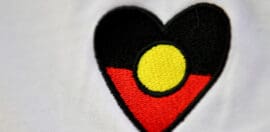Bridging the education gap: Why Australia is failing Indigenous Australians

2019 recipients of Community Sector Banking's Indigenous Scholarship Program.
23 January 2020 at 7:30 am
Nobody in Australia knows why we are failing to close the gap between Indigenous and non-Indigenous education like Indigenous Australians themselves, but their voices are still missing from the picture, writes Andrew Cairns, CEO of Community Sector Banking.
The national discourse about closing the gap between Indigenous and non-Indigenous education in Australia is missing one of the most critical points.
Over half of Indigenous students didn’t attend school consistently in 2017, according to the latest Closing the Gap report.
And, despite all efforts over the previous two years, not a single state or territory in Australia had managed to achieve a “meaningful improvement” to school attendance for our first people. In fact, in the Northern Territory, the Indigenous attendance rate actually fell, from 70.2 per cent in 2014 to 66.2 per cent in 2017.
While it’s easy to get caught up focusing on these deeply shameful figures, the question we need to be asking is: why, given all the resources, expertise and money being mobilised to close the gap, are we failing to meet the targets?
We need to step away from the data. While it’s important of course to show progress, it will not show us the solution.
Those who truly understand the problem, are living it. They are Aboriginal and Torres Strait Islander peoples. Nobody in Australia knows why we are failing to close the gap between Indigenous and non-Indigenous education like Indigenous Australians themselves. But far too often, their experiences, their concerns, and their voices are missing from the picture.
This is an incredibly complex problem, shadowed by the history of racism, exclusion and white privilege against Indigenous Australians in this country – the deep scars of which we see today.
Still, ask Indigenous Australians and experts who work closely with them, and they will be able to rattle off a raft of ways that we could – and should – be doing better.
We should be doing better to support Indigenous Australians during their studies – from early childhood education right up to their final year of study. Connection to country and communities with engaged parents are essential to Indigenous education. Some programs and schools are doing particularly well and we must learn from them. But we can’t forget the curriculum and learning materials. There is a serious lack of Indigenous Australian faces and history in the materials that students are being handed. And research shows that students who aren’t represented in textbooks perform worse academically.
We should be doing better to support Indigenous Australians who want to go on to undertake further study in technical colleges and universities. Firstly there is the expense. Initiatives like Community Sector Banking’s Indigenous Scholarship Program can provide vital support to cover the costs of further education – not just the uni or TAFE fees, but all the extra expenses associated, such as books and materials, and the costs of moving and living away from home. We also need to consider the culture shock that can occur when a student has to move to a new town or city to study, not to mention the impact of being away from their family community. The lack of appropriate support during this critical time is a huge barrier to students being able to complete their studies.
Finally, we should be doing better to help Indigenous Australians in that most difficult time after they finish their studies. We should be better supporting young men and women to find their first job, move up in their career, or start their first business. Everyone has a role to play here. We must all be aware of the barriers Indigenous Australians face and work to overcome them, whether that’s through implementing inclusive hiring policies or initiatives to empower Indigenous entrepreneurship.
We cannot forget that behind all the closing the gap statistics are human lives.
Every year we miss a target is a missed opportunity for girls and boys, young women and young men growing up around Australia. Every single Indigenous Australian child has the right to get an education and choose what they want to do in life, just like every other Australian. We cannot focus enough energy on closing the gap, not just in education but all areas of disadvantage. We cannot risk another child’s future falling through the cracks.
About the author: Andrew Cairns is the CEO of Community Sector Banking, Australia’s banking specialists for not-for-profit organisations.







